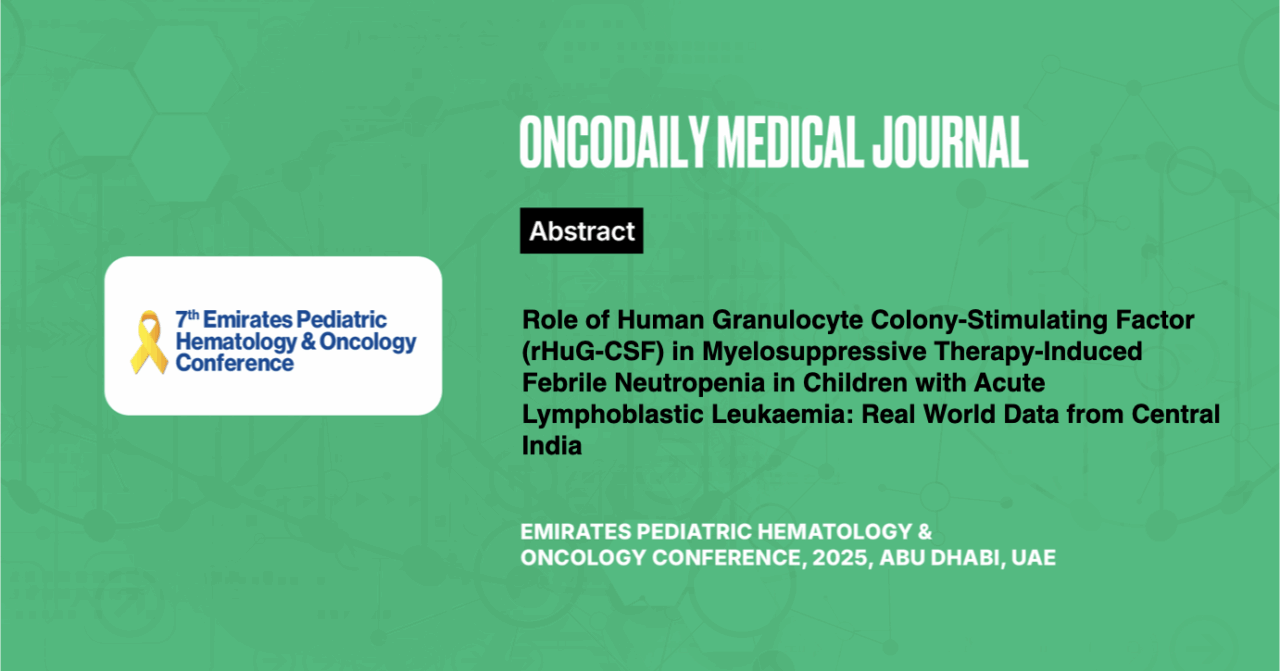Role of Human Granulocyte Colony-Stimulating Factor (rHuG-CSF) in Myelosuppressive Therapy-Induced Febrile Neutropenia in Children with Acute Lymphoblastic Leukaemia: Real World Data from Central India
Abstract
Introduction: This study was planned to explore the efficacy of rHuG-CSF in myelosuppressive therapy-induced febrile neutropenia (FN) among children with acute lymphoblastic leukaemia (ALL) due to paucity of evidence from low-middle-income countries (LMICs).
Primary objective was to find out the time to defervescence and time to neutrophil recovery (absolute neutrophil count (ANC) >1000 cells/mm3) in these leukemic children with FN. The secondary objective was to find out the duration of hospitalisation, time to withdrawal of antibiotics and the adverse effects of rHuG-CSF in them.
Methodology: This prospective interventional study was conducted in the State Government Cancer Institute of Central India from January 2022 to August 2024 among hundred children with ALL from 1 to 14-years of age treated with ALL-IC-BFM-2009 chemotherapy. Those children admitted with fever defined as oral temperature >38.3ºC unrelated to transfusions along with grade-IV neutropenia (ANC<500/mm3) were given rHuG-CSF subcutaneously with a dose of 5 mcg/kg/day, for up to 2-weeks or until the ANC reached 1000 cells/mm3.
ANC levels were measured daily and temperature was documented 6-hourly. Primary end points included time to defervescence and time to neutrophil recovery. Secondary end points measured were length of hospitalization and time to withdrawal of antibiotics. All clinically significant adverse effects after administering rHuG-CSF were documented.
Results: In this study the most common age group affected was between 5 to 12-years (75%) and 63% were males. Most of the children (n=54) received rHuG-CSF for 3-days and maximum duration of administering rHuG-CSF was 7-days. Mean time for resolution of fever was 4.6±0.89 days and for resolution of neutropenia was 2.2±0.75 days. Mean duration of hospitalization was 12.7±3.17 days and mean duration of IV antibiotics usage was 8.8±2.36 days. The most common adverse effect of rHuG-CSF was bony pain (52%) followed by vomiting (30%) and headache (18%).
Based on the current available evidence and physician experience, the optimum application of rHuG-CSF in myelosuppressive therapy-induced FN among children with ALL in clinical practice is controversial, embarking the need of this study. This study provides the data from LMICs regarding the efficacy of rHuG-CSF in accelerating resolution of fever and recovery of neutropenia. It also exhibited efficacy in terms of duration of hospitalization and IV antibiotic usage in leukemic children with FN. rHuG-CSF was well tolerated in children with bony pains being the commonest adverse effect, similar to the findings by Sasse et al.
Conclusion: We conclude that in our experience rHuG-CSF can be safely administered to children with ALL in the treatment of myelosuppressive therapy-induced FN and is beneficial in ameliorating neutropenia.





